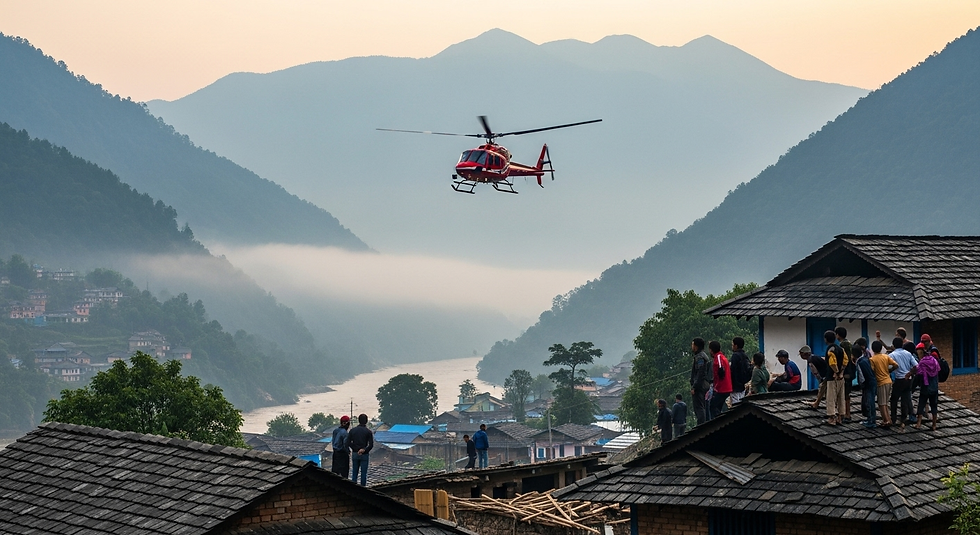Ancient Rock Art Near Almora and the Magic of Suyal River
- Deepak Singh Bhandari

- Aug 12, 2025
- 3 min read
The first time I saw the red shapes on the stone, my mind went quiet.Not because they were just drawings — but because they were whispers from people who lived thousands of years ago, still speaking across time.
In this article, you will learn :
How to visit the Lakhudiyar Caves and see the ancient rock art near Almora.
The stories hidden in these prehistoric designs.
Why this riverside site is one of India’s rarest heritage treasures.
The Lakhudiyar Caves are not the kind of place you stumble upon in glossy travel magazines. You find them by following the curves of the Suyal River, passing through Barechhina’s bustling market, and then climbing a small set of stone steps that lead into another world.
Here, on rock walls and ceilings, are paintings in deep red, black, and faded white — animals mid-run, human stick figures in hunting scenes, waves and geometric patterns that look almost modern. They were painted by people who used these shelters to survive the wind, rain, and cold, and yet they took the time to create art. That says something profound about us as humans: survival isn’t enough; we need to leave stories behind.

Walking Through Time
The path is surprisingly easy, but every step feels heavier with history. You can see the Suyal River shimmering below — maybe it looked the same when those ancient artists dipped their fingers into natural pigments.
If you’ve been to Bhimbetka in Madhya Pradesh or the lesser-known rock shelters of Chhattisgarh, you’ll feel a strange sense of déjà vu. But here, in the Kumaon hills, the experience is quieter, more personal. There are no large crowds. Sometimes you stand there alone, hearing nothing but the wind through the sal trees.
One local told me, “Yeh jagah sirf dekhne ki nahin hai… mehsoos karne ki hai.” (“This place is not just to be seen… it’s to be felt.”) And he was right.
The Magic of the Suyal River
Rivers have always been more than water — they are lifelines. The Suyal’s curves protect the caves in a natural embrace, and you can almost imagine early humans collecting water here, resting in the shade, and adding a new line to a wall that would outlast empires.
Stand quietly by the bank and you’ll see it: the same rhythm that once pulled people here still flows. It’s in the rush of the current, in the cool air against your face, in the way the rocks seem to guard their stories.
Visiting Tips for Travelers
Best time to visit: October to March for pleasant weather and clear river views.
Getting there: From Almora, Barechhina is about 20 km by road. The caves are a short climb from the main road.
What to bring: Comfortable shoes, water, and a sense of curiosity. Photography is allowed, but avoid touching the rock surfaces.
Combine your trip: You can pair your visit with Jageshwar Temples, just an hour away.
As I left, I looked back one last time at the cave wall. The figures seemed alive, as if they were mid-movement, still hunting, still dancing, still telling stories.
“We die. That may be the meaning of life. But we do language. That may be the measure of our lives.” – Toni Morrison
If you ever find yourself in Almora, take a detour to see the ancient rock art near Almora. Let the Suyal River guide you, and let those red lines on stone remind you that we are all part of a much older story.



Comments